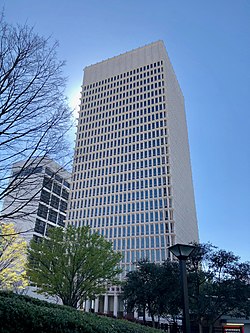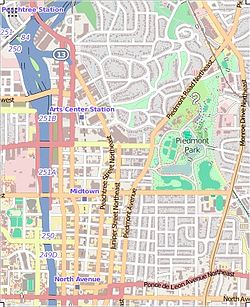| One Georgia Center | |
|---|---|
 One Georgia Center (2019) | |
| Alternative names | Life of Georgia Building |
| General information | |
| Status | Completed |
| Type | Office |
| Architectural style | International |
| Address | 600 West Peachtree Street, NW Atlanta, Georgia 30308 |
| Coordinates | 33°46′15″N84°23′16″W / 33.77083°N 84.38778°W |
| Completed | 1968 |
| Height | 371 ft (113 m) |
| Technical details | |
| Floor count | 24 |
| Lifts/elevators | 10 |
| Design and construction | |
| Architecture firm | Lamberson, Plunkett, Shirley and Wooddall Eggers & Higgins |
| Main contractor | Cousins Properties |
| References | |
| [1] [2] | |
One Georgia Center (formerly known as the Life of Georgia Building) is a skyscraper in SoNo, Atlanta, at the intersection of West Peachtree Street and North Avenue. Completed in 1968, the 24-story building is notable for its Georgia marble exterior. [3]



